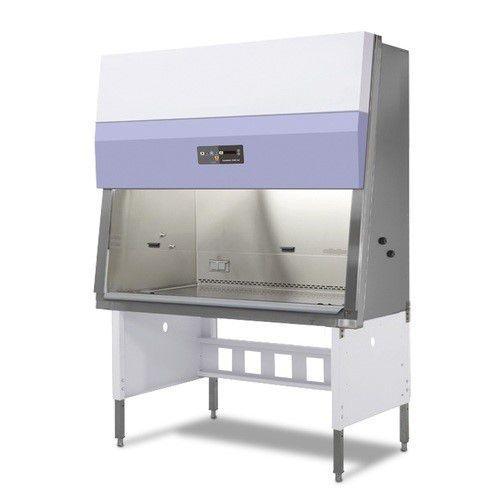Biological Safety Levels (BSLs)

In any cleanroom, the top priority is always the safety of consumers and operators. To avoid any risks, especially when working with hazardous materials, the Centers for Disease Control and Prevention (CDC) have created certain rules for protection and cleanliness: biological safety levels. These regulations ensure any hazardous microorganisms and bio-contaminants are isolated in a controlled environment. The rules also provide guidelines for procedures, precautions, and environmental control within the cleanroom for the safety of operators. BSLs are not limited to a certain industry but are applied every day in various productions.
There are four biological safety levels. Each level is associated with a different degree of danger and proposes accurate protocols to prevent and avoid any health-related threats. Every level strengthens the standard controls of the previous level.
Biological Safety Level #1
Level 1 is the least hazardous. It requires a basic degree of caution because there is little to no health risk for operators who are non-immunocompromised. A nonpathogenic strain of E. Coli, and Staphylococcus, Bacillus subtilis, Saccharomyces cerevisiae would be an example of a minimal hazard agent. The cleanroom with BSL 1 is usually separated only by a cleanroom door from the rest of the facility. Operators only work with agents and compounds that are known not to cause diseases that could affect healthy humans. The protocols for BSL 1 are personal protective equipment (PPE), personal hygiene such as hand washing, and continual sanitization of work surfaces. Due to the uncomplicated maintenance, BSL 1 laboratories are usually used in colleges and high schools as teaching spaces.
Biological Safety Level #2
In cleanrooms with BSL 2, operators are working with microbes that might cause moderate-risk diseases in humans. Personnel working in these conditions should either have specific training or be supervised by scientists advanced in the field. Self-closing cleanroom doors usually separate the cleanroom from the rest of the facility. In addition, numerous biological safety cabinets (BSCs) are installed in the room for safely operating procedures. The standard safety regulations of BSL 1 are enforced in a cleanroom with BSL 2 with additional PPE for operators, such as face shield and eye protection. The eyewash station and sink should be easily available. The decontamination of the equipment is also improved by using high pressure and saturated steam (autoclave).

Biological Safety Level #3
Cleanrooms with BSL 3 require even stronger protection protocols because they might contain airborne agents which could cause fatal responses through respiratory transmission. Bacteria that cause tuberculosis would be an example of a dangerous airborne microbe. As a consequence, protocols for a BSL 3 dictates that the cleanroom is separated from the rest of the facility by two sets of self-closing and locking doors. In addition to standard PPE, operators are also required to wear respirators, full cover suits, and have to be immunized for the microbes they are working with. All procedures must be performed in biological safety cabinets (BSC). The air exhausting mechanisms are enforced as most dangerous agents are airborne. Air cannot be recirculated but rather drawn from clean areas.
Biological Safety Level #4
BSL 4 requires the highest degree of protection and preventative measures and is used for cleanrooms with extremely high hazardous risks. Generally, such measures are recommended when working with airborne agents that cause diseases for which there are no vaccines or treatment, such as the Ebolavirus or the Coronavirus. Unknown pathogens are researched at this level as well until there is enough data to determine their level of hazard. BSL 4 protocols do not only protect the operator but also assure the contaminants never leave the restricted area and escape into an uncontrolled environment. That is why the cleanroom has to be located separately from the rest of the facility. Access to the cleanroom is restricted to authorized personnel only. Every entering and exit must be recorded for safety purposes.
In addition to standard PPE, operators are also required to wear a full-body, positive pressure suit which would force the air to flow out if damaged. Operators must shower every time they exit the lab. All procedures must be performed in a class III Biological Safety Cabinet (BSC). None of the materials should exit the lab area unless necessary and in that case, they must be properly cleaned and decontaminated before exiting the cleanroom. BSL4 protocols also require air exhaust with the addition of decontamination systems and vacuum lines. Canada’s only BSL4 laboratories are located in Winnipeg, Manitoba, at the Canadian Science Centre for Human and Animal Health (CSCHAH), under the National Microbiology Laboratory since 1999.
BSL vs. ISO classifications
ISO classifications and BSLs are both used to control the environment in the cleanrooms, however, they are not the same thing as their protocols address different issues. While BSL restrictions are used to protect the operators from biological danger, ISO rules protect materials of sensitive products from being contaminated. ISO standards control the concentration of specific particles in the cleanroom environment which might be destructive to certain materials. Still, both ISO classification and BSLs take an important place when deciding what kind of cleanroom best suits the needs of the industry. Managing the safety of operators, products, and the environment is important for any corporation.
A Cleanroom Hub (ACH) is a specialized controlled environment and cleanroom service provider who can help your business to develop the right user requirement specifications (URS) , Engineering documentation , Planning and execution of your project to achieve its intended results, for more information , please, reach out to www.achengineering.com or via info@achengineering.com.
GET IN TOUCH
Complete the form below to get in touch with our team.
